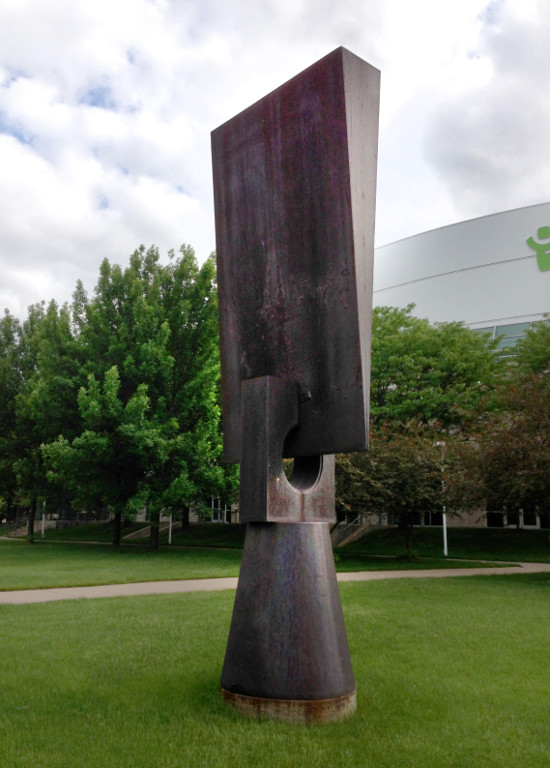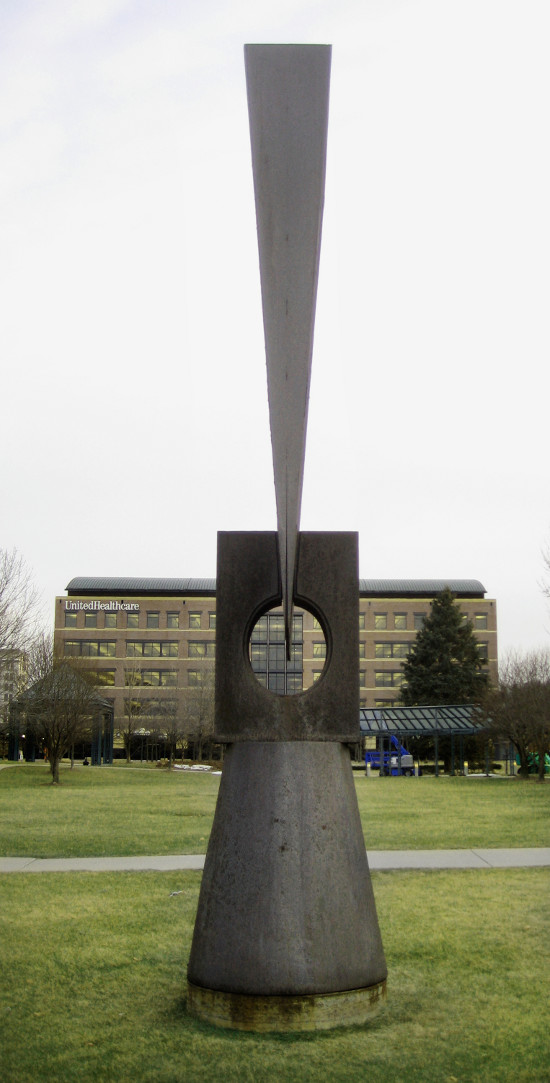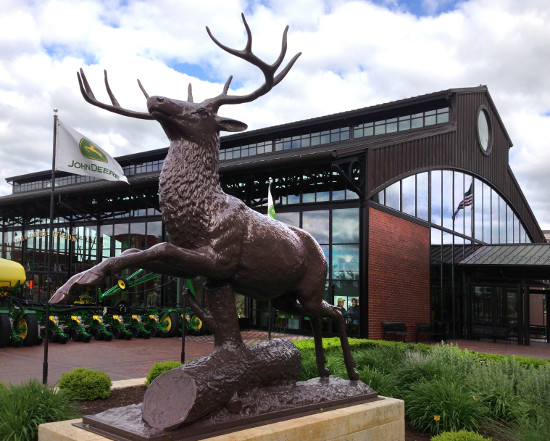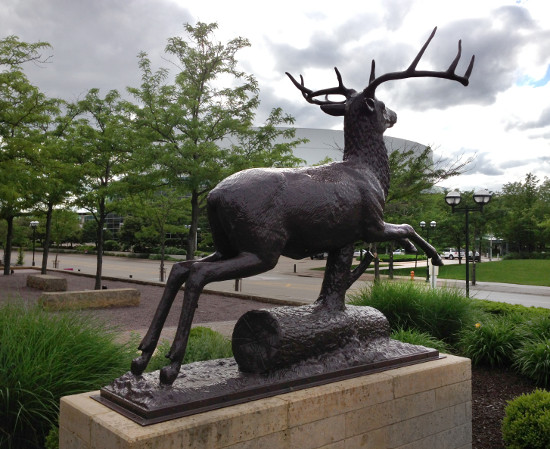
Downtown Moline's industrial past is memorialized by two metal sculptures. One is abstract, the other representational. Both are reminders that the downtown riverfront was once crowded with factories and was at the heart of the "Farm Implement Capital of the World."
Spirit of Place, an imposing 19-foot-tall sculpture, stands between the i wireless Center and the Radisson hotel on a lawn that stretches from River Drive to the riverfront. The iron sculpture consists of a massive wedge seemingly piercing a geometric form atop a conical base. Unless one reads the nearby plaque that states that John Deere's first plow factory was built on the site in 1848, the artwork seem out-of-place in its pleasant surrounding.
The six-ton sculpture was cast at the John Deere Foundry in East Moline in 1981. The artist, Beverly Pepper, worked closely with the foundry to develop techniques and methods to produce this work - the first sculpture cast on a monumental scale in ductile iron. The impact of the artwork is shaped, in part, by the industrial process and materials used to create it.

Pepper described some of her massive works as "metamorphosed tools." The wedge form that slices downward feels like an ax or a plow breaking through the soil. Pepper uses the wedge - one of the six simple machines - in combination with basic geometric forms to create a sense of something primal. Its scale and materials add a sense of power.

To the south of River Drive near the John Deere Pavilion is a life-sized statue of a leaping stag. It is, in effect, a three-dimensional realization of the first John Deere logo, trademarked in 1876. Although it is an impressive artifact from the late 19th Century, it doesn't convey the same sense of industrial might as Spirit of Place. The statue's forward movement instead conveys a sense of progress.
The sculpture is made of copper sheets that were stamped into cast-iron molds, soldered together, and braced internally with a metal frame. The W.H. Mullins Company of Salem, Ohio, made the sculpture between 1893 and 1896. Although the sculptors' names are unknown, they were German and Hungarian artists.
Charles Deere, the son of John Deere and president of Deere & Company from 1887 to 1907, originally saw a prototype of the sculpture at the 1893 World's Columbian Exposition in Chicago. Deere wanted a sculpture of the stag on top of every John Deere factory building. In all, 20 replicas - often gilded - were placed as architectural ornaments on factory roofs.
According to Deere & Company Collections Manager Nathan Augustine: "Over the years, they decayed and were neglected; some were lost, destroyed, or stolen. In the early 1990s, company CEO Hans Becherer began a program of gathering and restoring them. There are currently 14 in the company's possession."

Six are in the Quad Cities: in downtown Moline; at the TPC Deere Run golf course in Silvis; at the Harvester Works visitor center in East Moline; at the Parts Distribution Center in Milan; at the world headquarters in Moline; and at the Quad City International Airport in Moline.
Augustine added: "There are many variations on the antlers even among the ones owned by Deere. The antlers are one of the most fragile parts, so they get repaired or replaced often."
Consolidation and modernization made the factories along the Moline riverfront obsolete. In their stead stand the i wireless Center, restaurants, hotels, and other businesses. Among them also stand these two sculptures rooted in the area's transformative industrial history.
Bruce Walters is a professor of art at Western Illinois University.
This is part of an occasional series on the history of public art in the Quad Cities. If there's a piece of public art that you'd like to learn more about, e-mail the location and a brief description to BD-Walters@wiu.edu.










